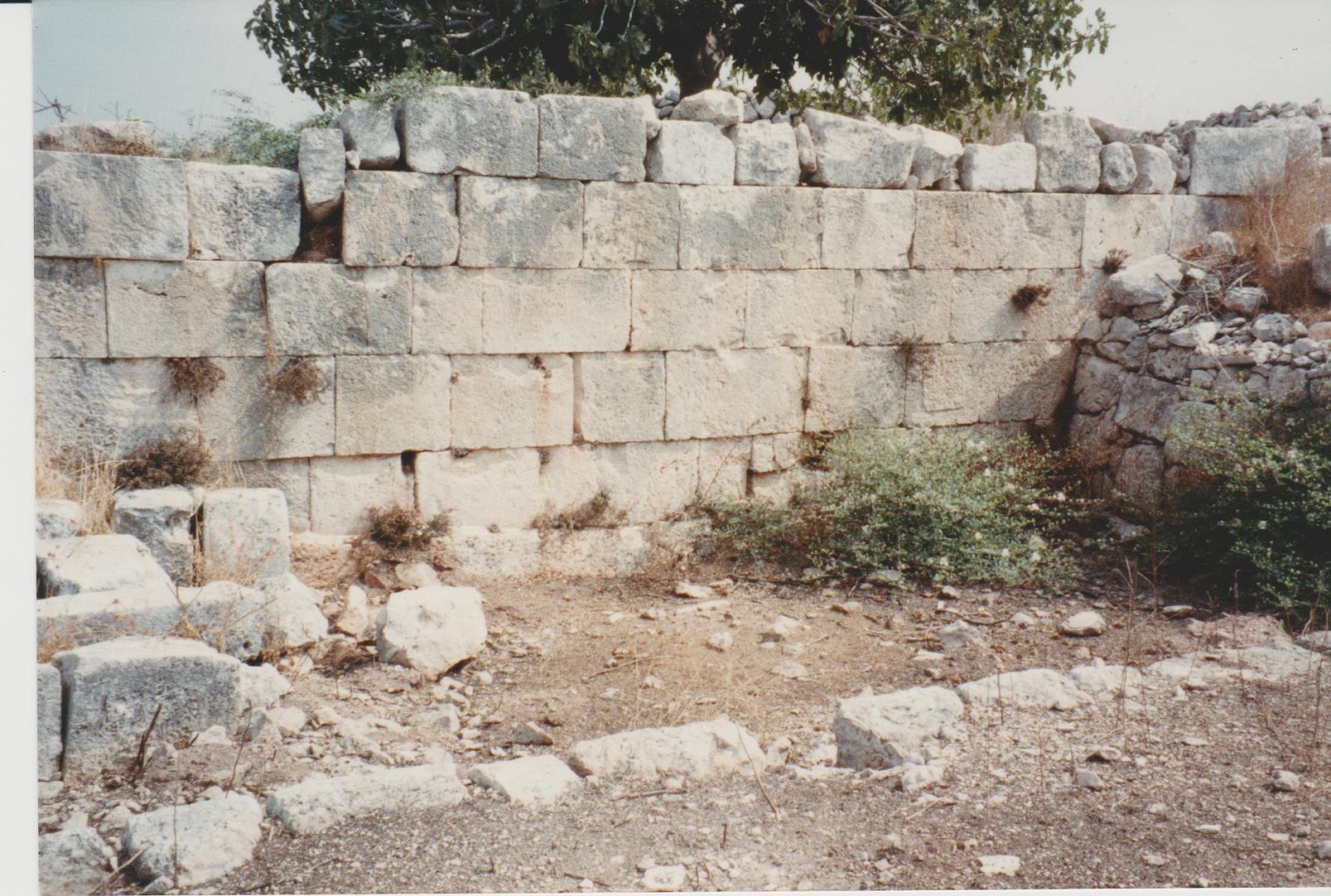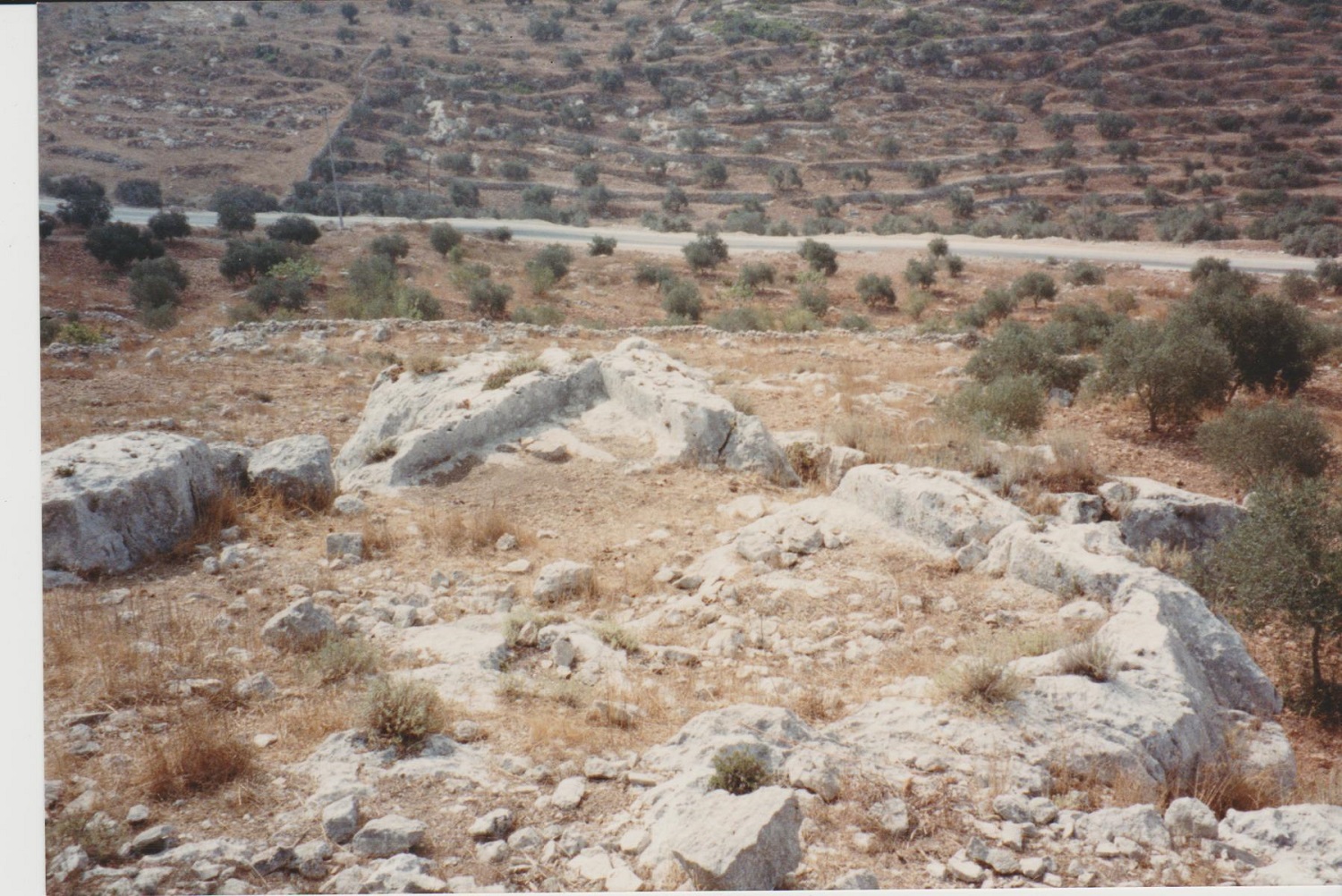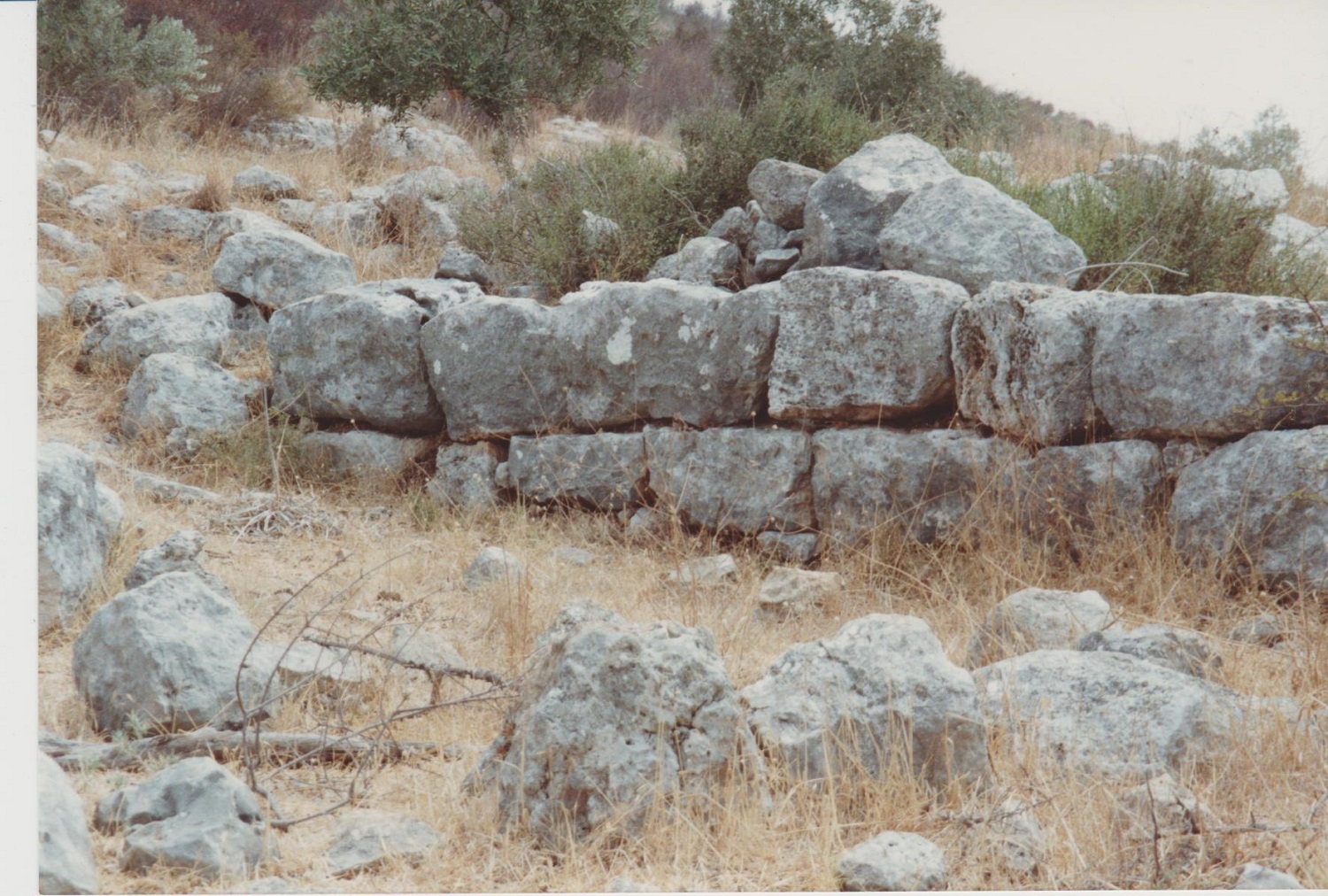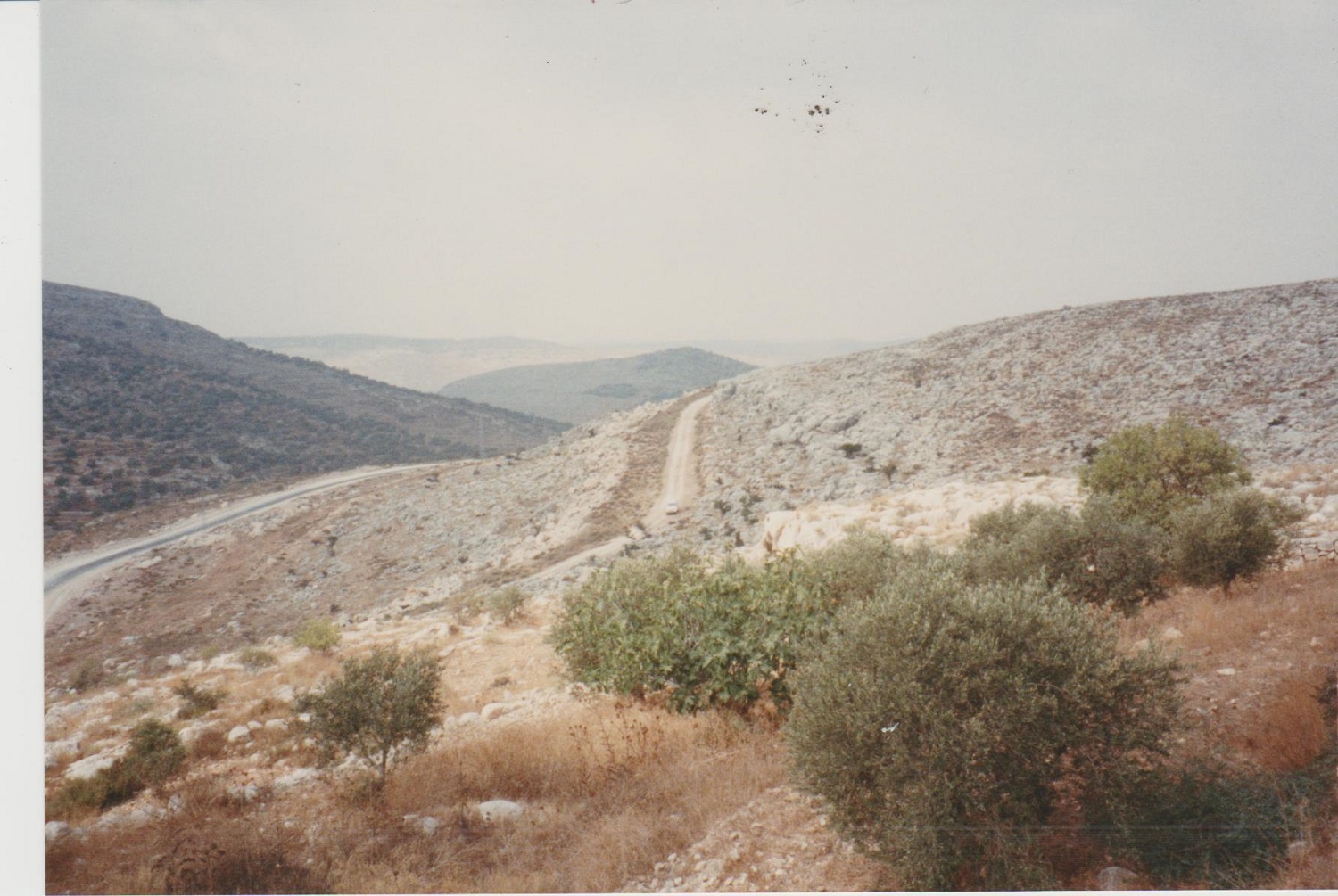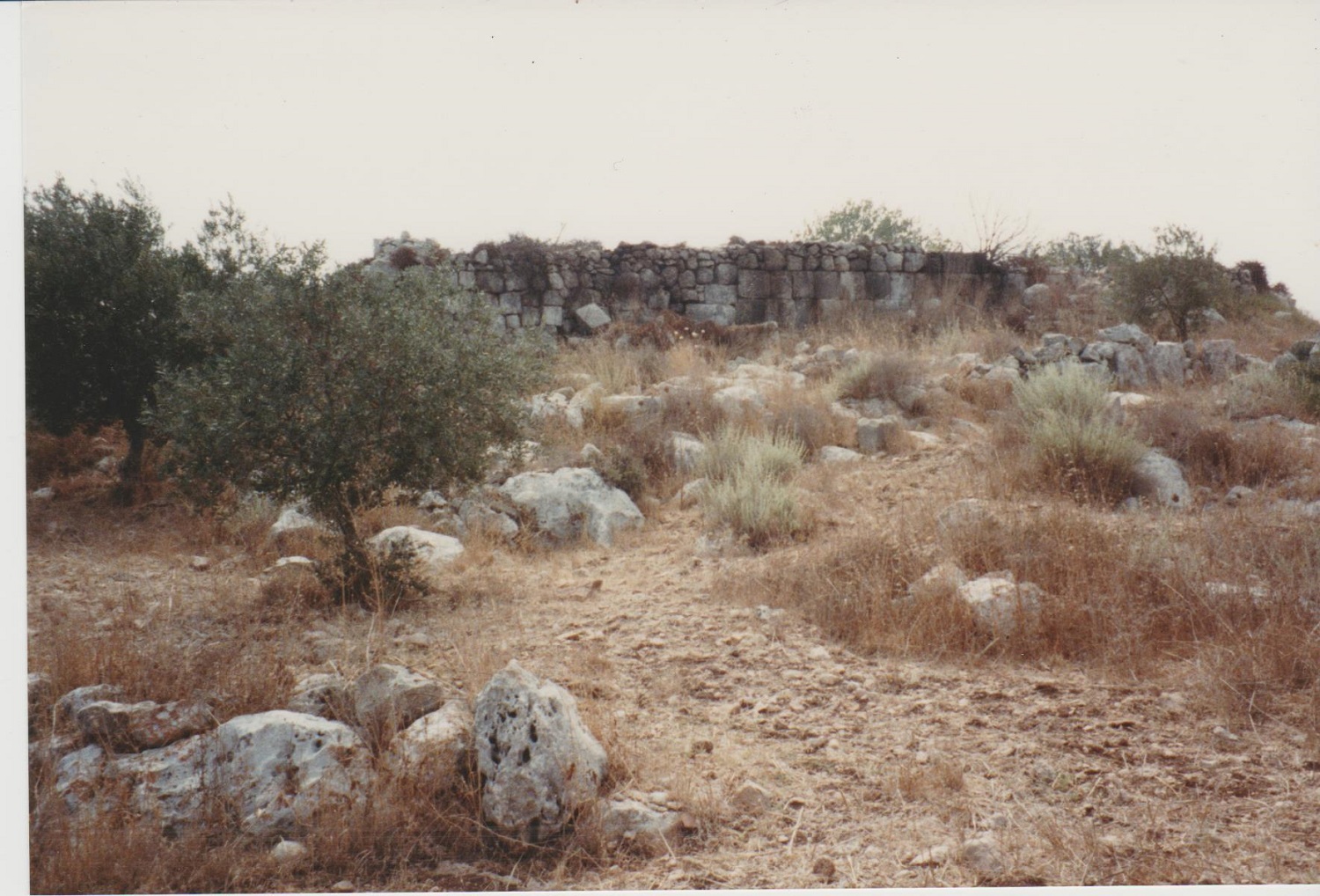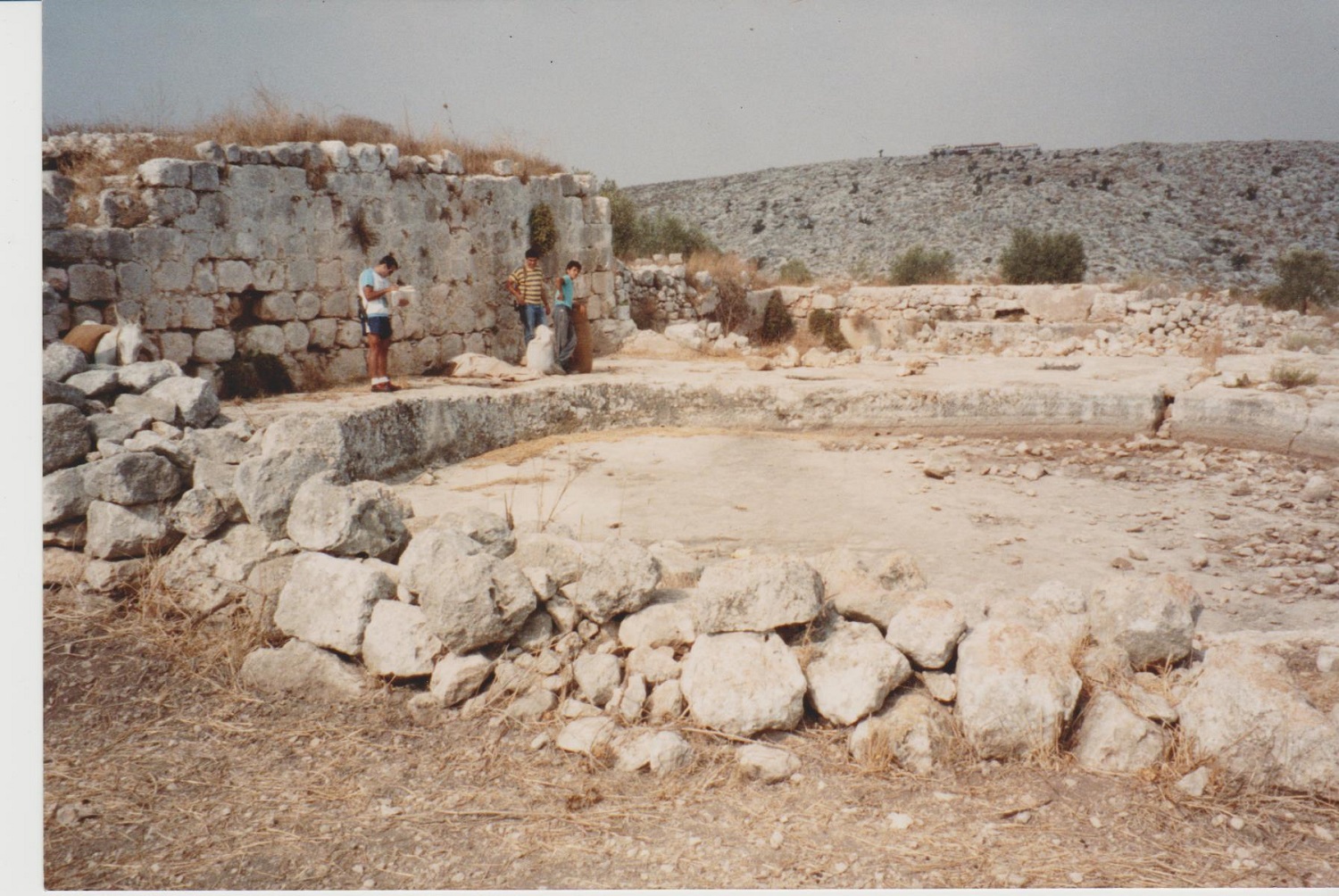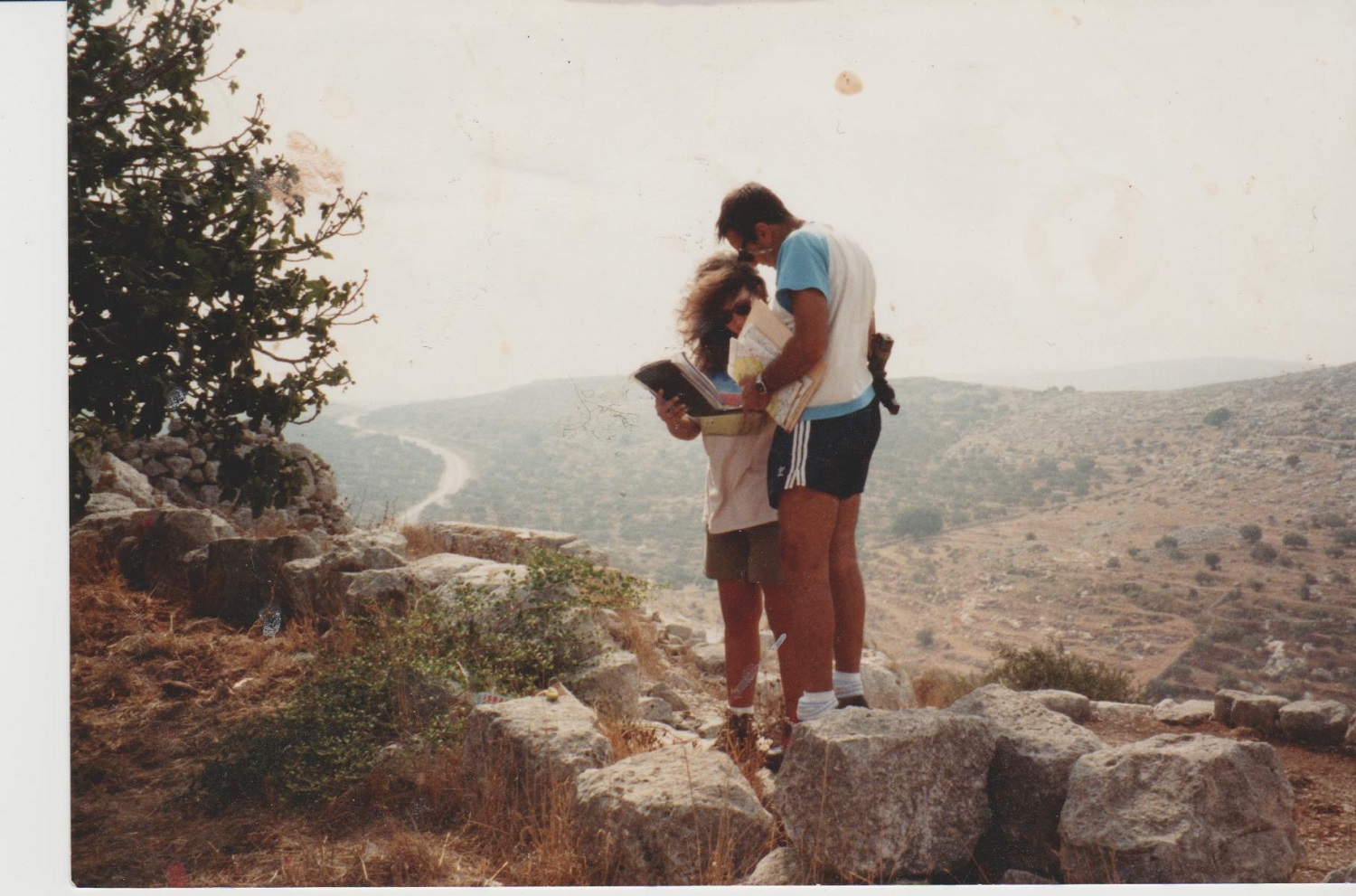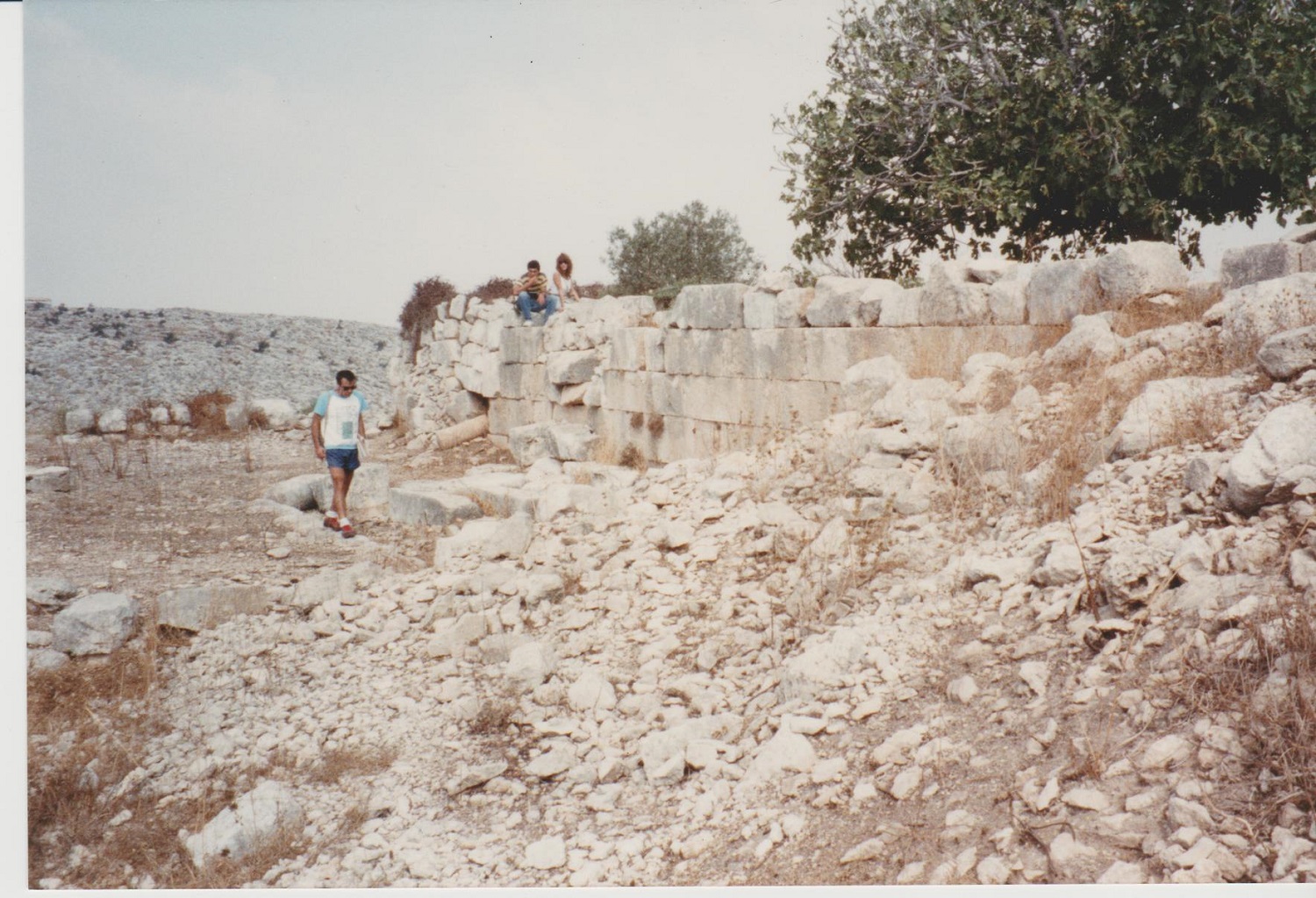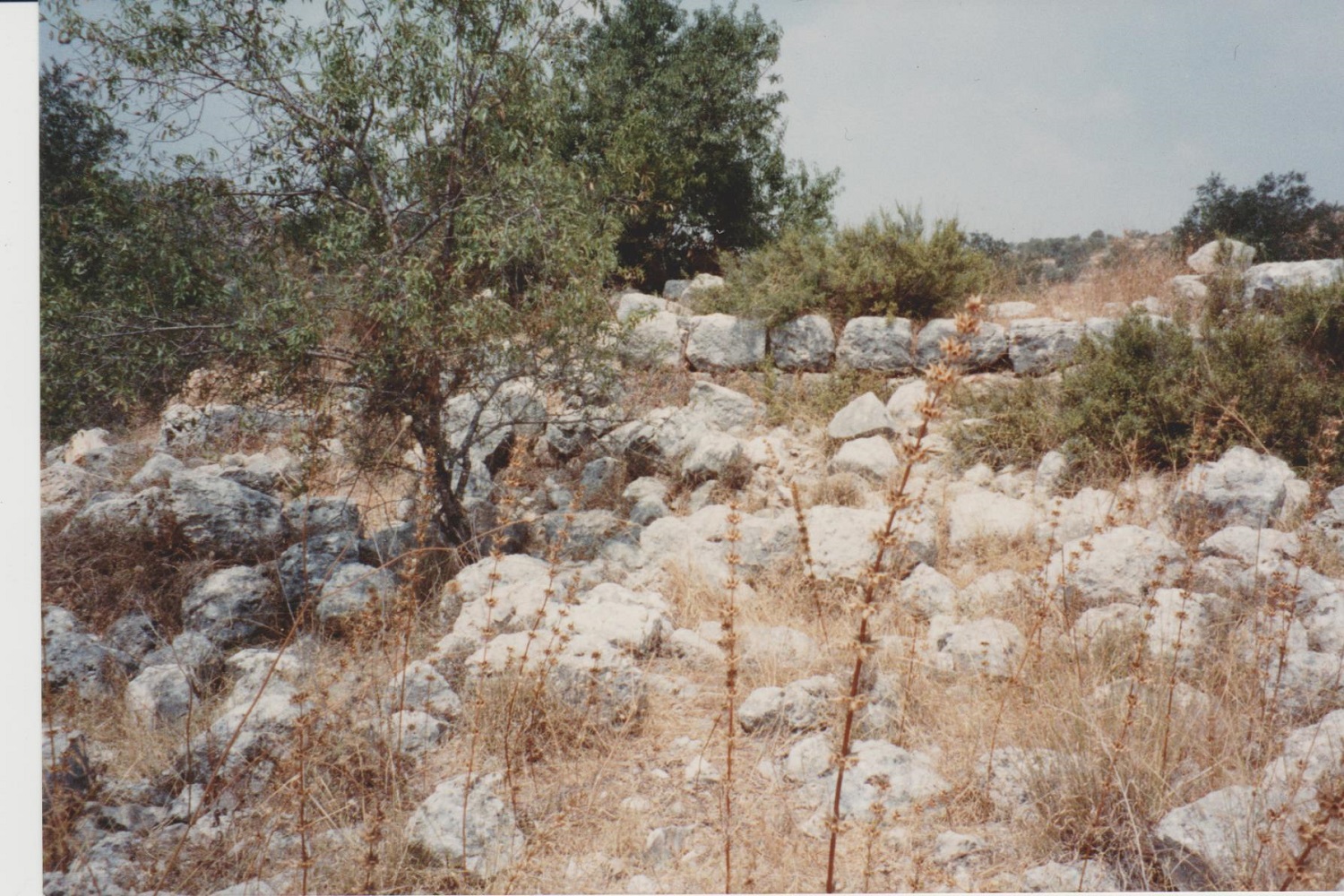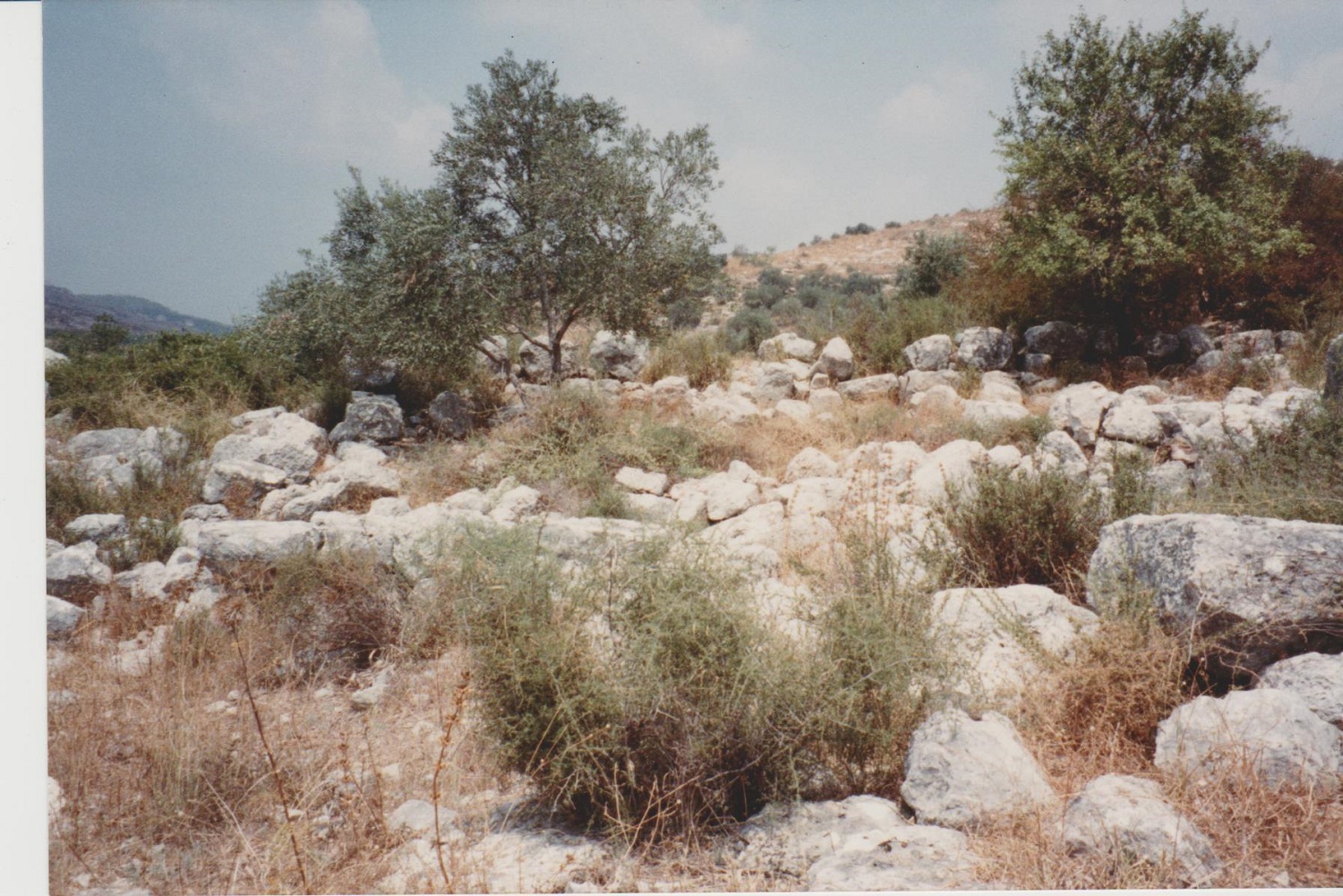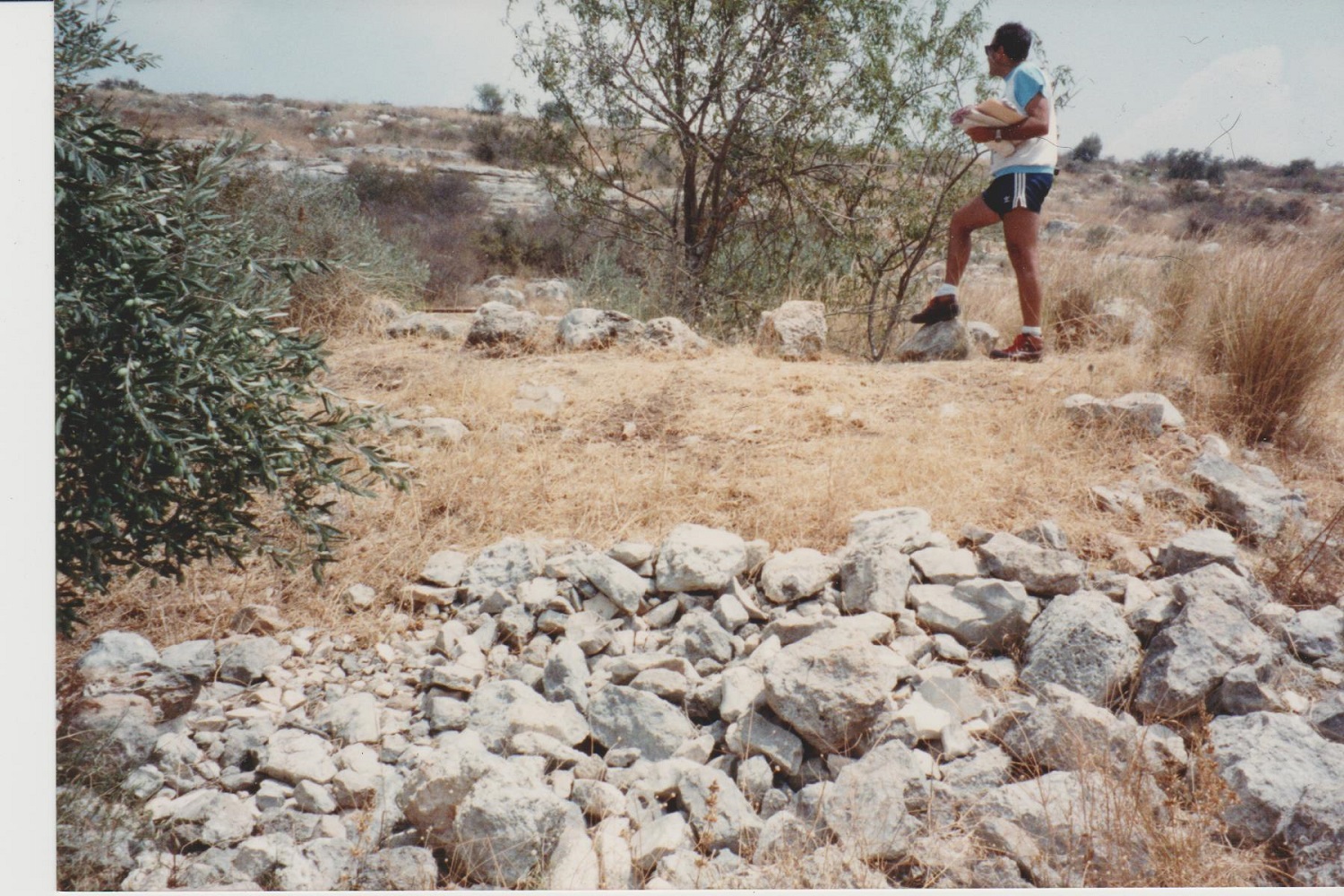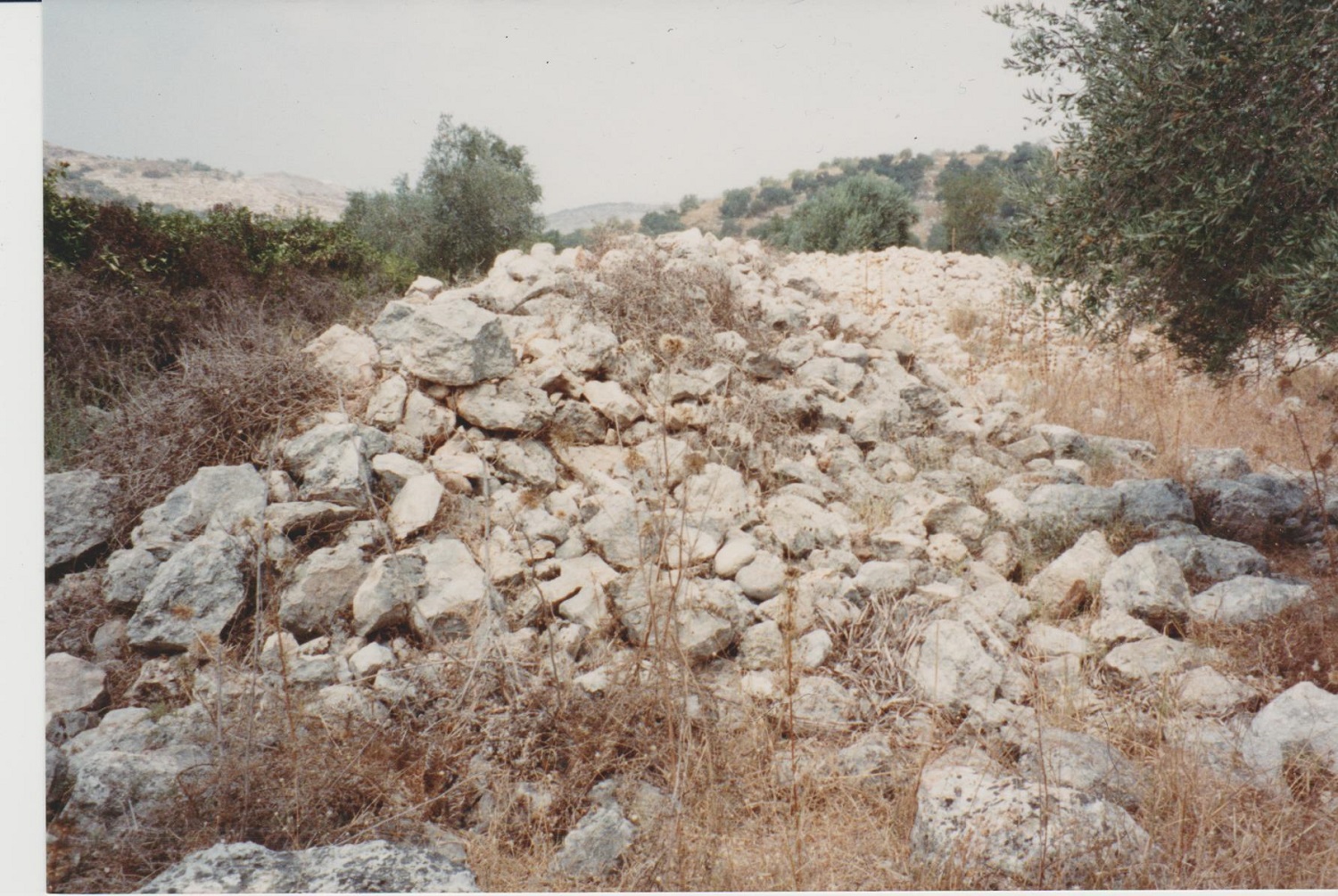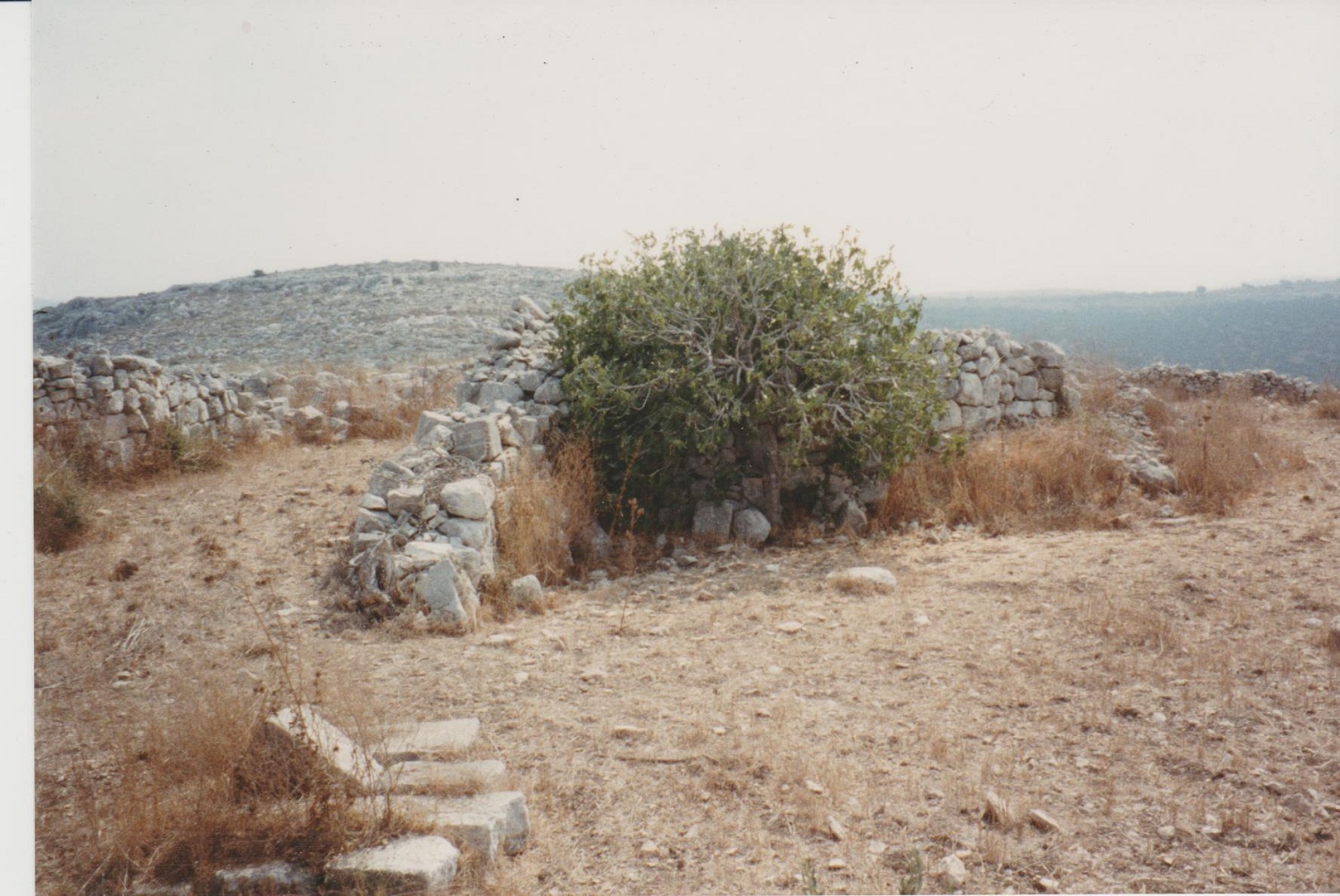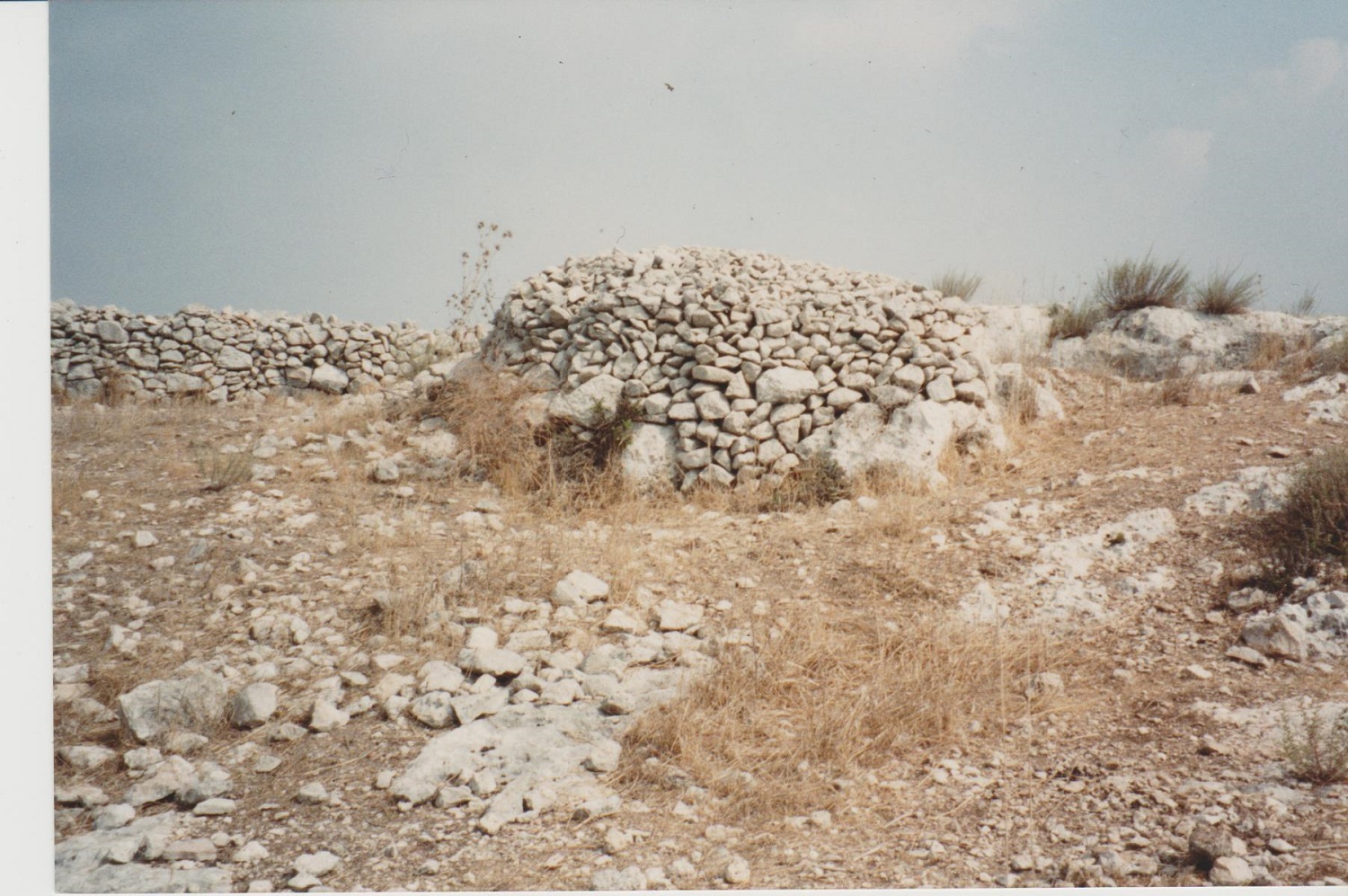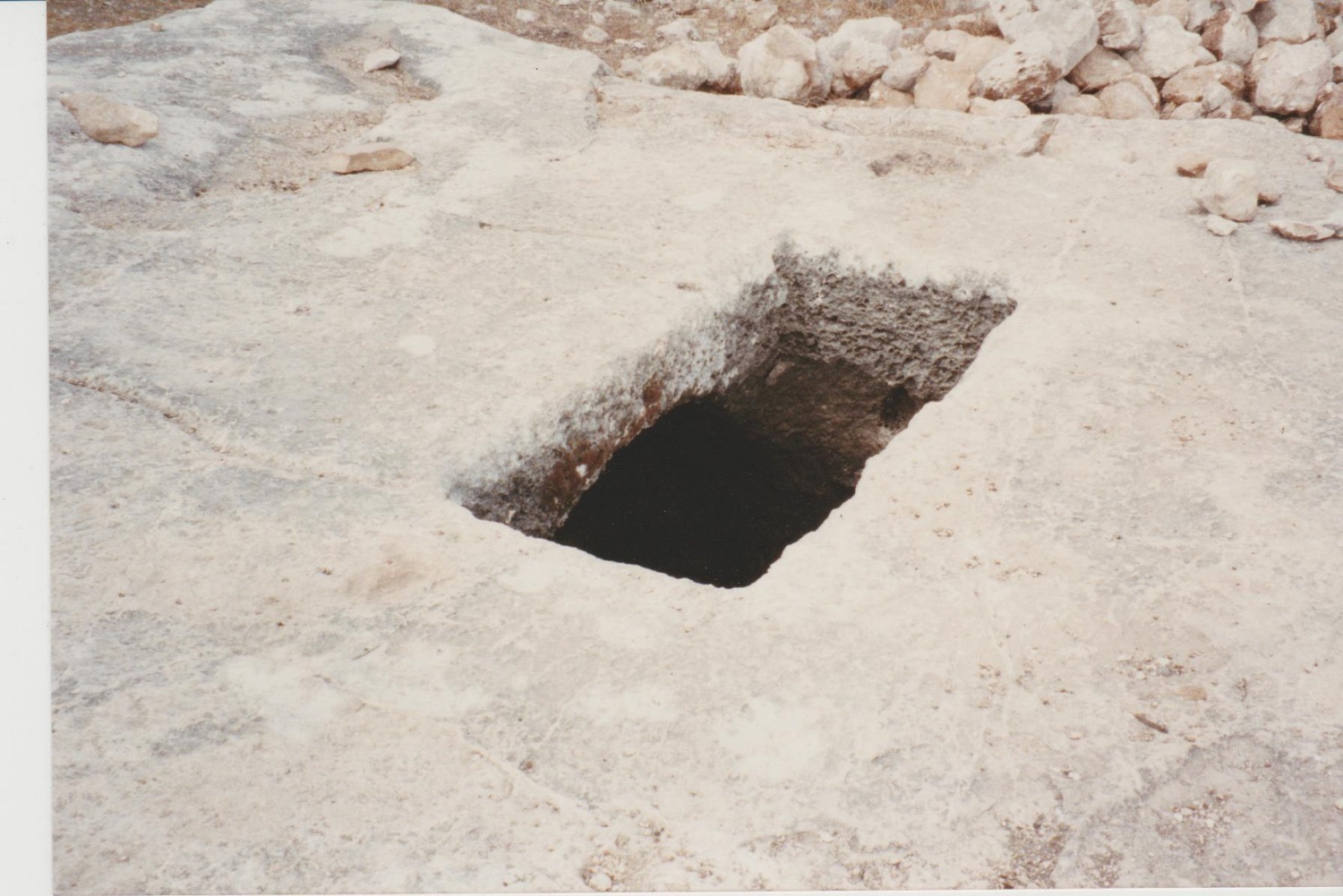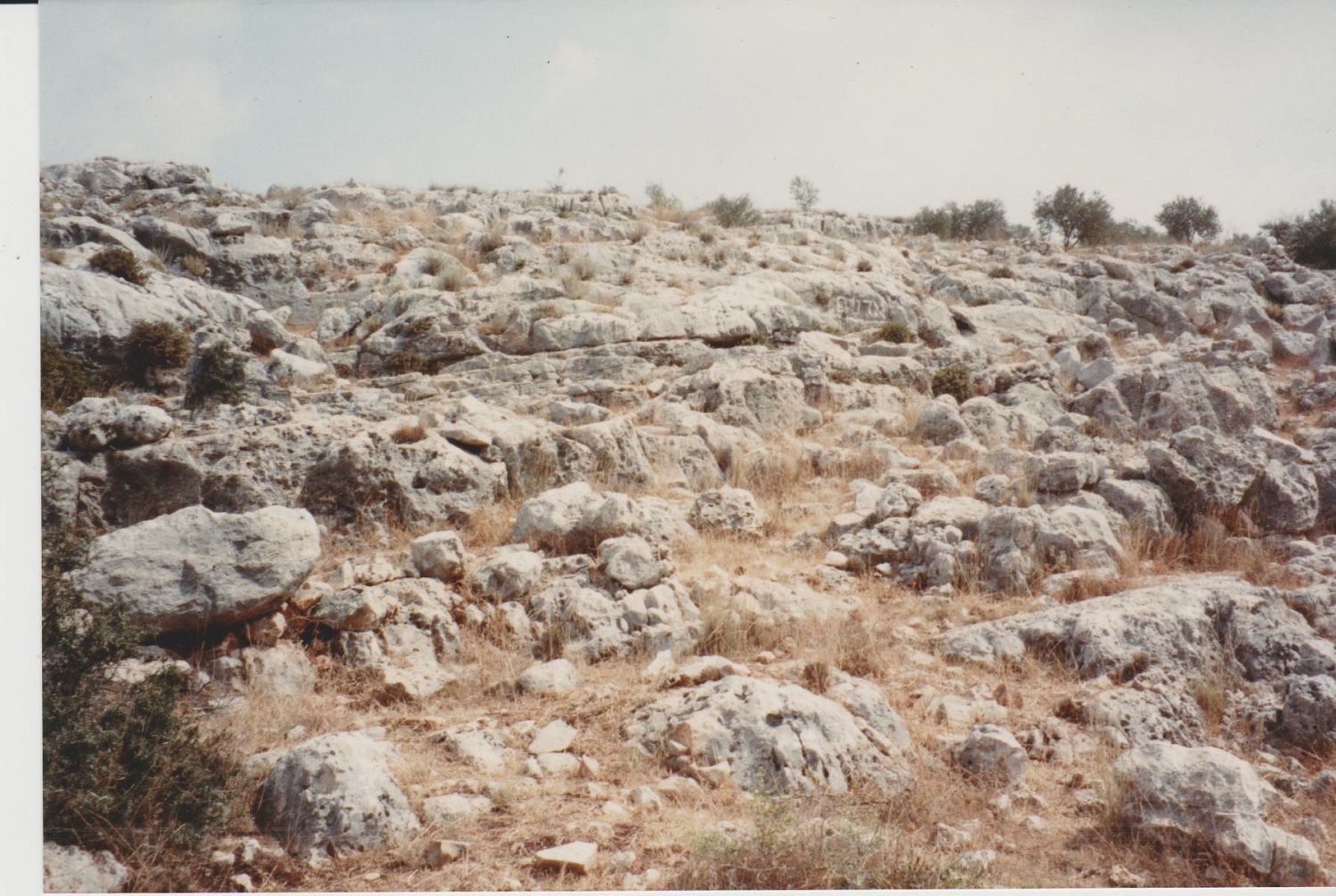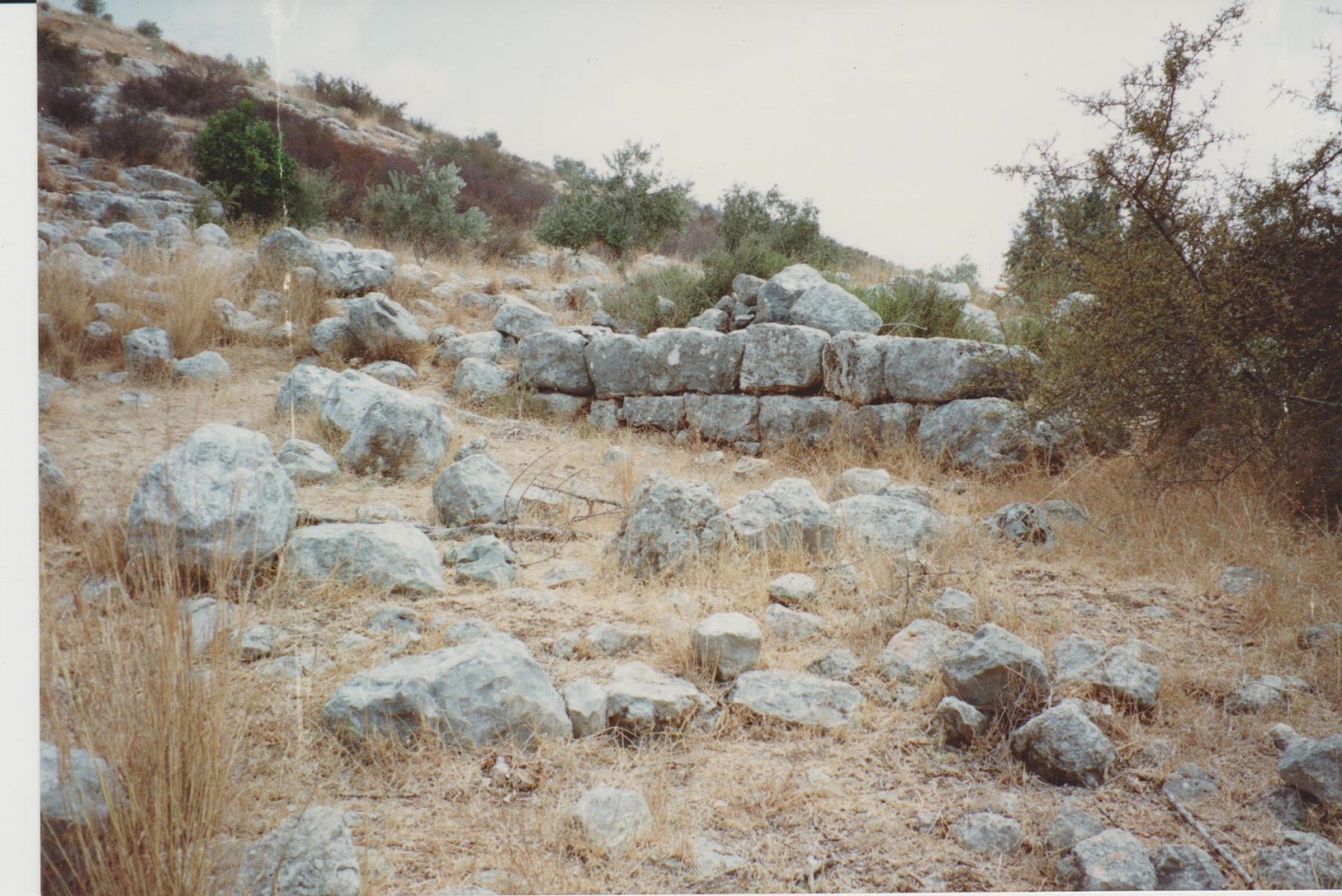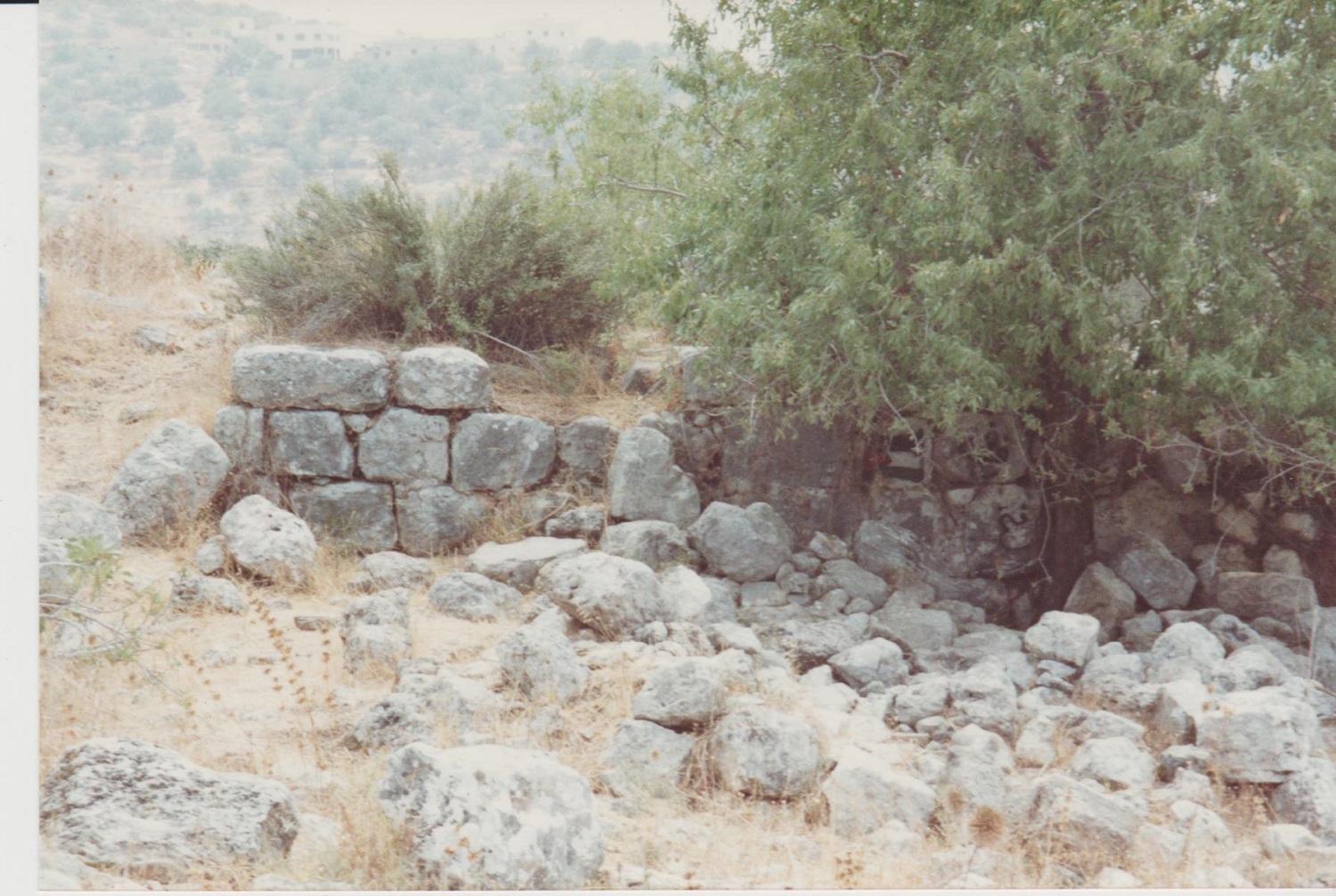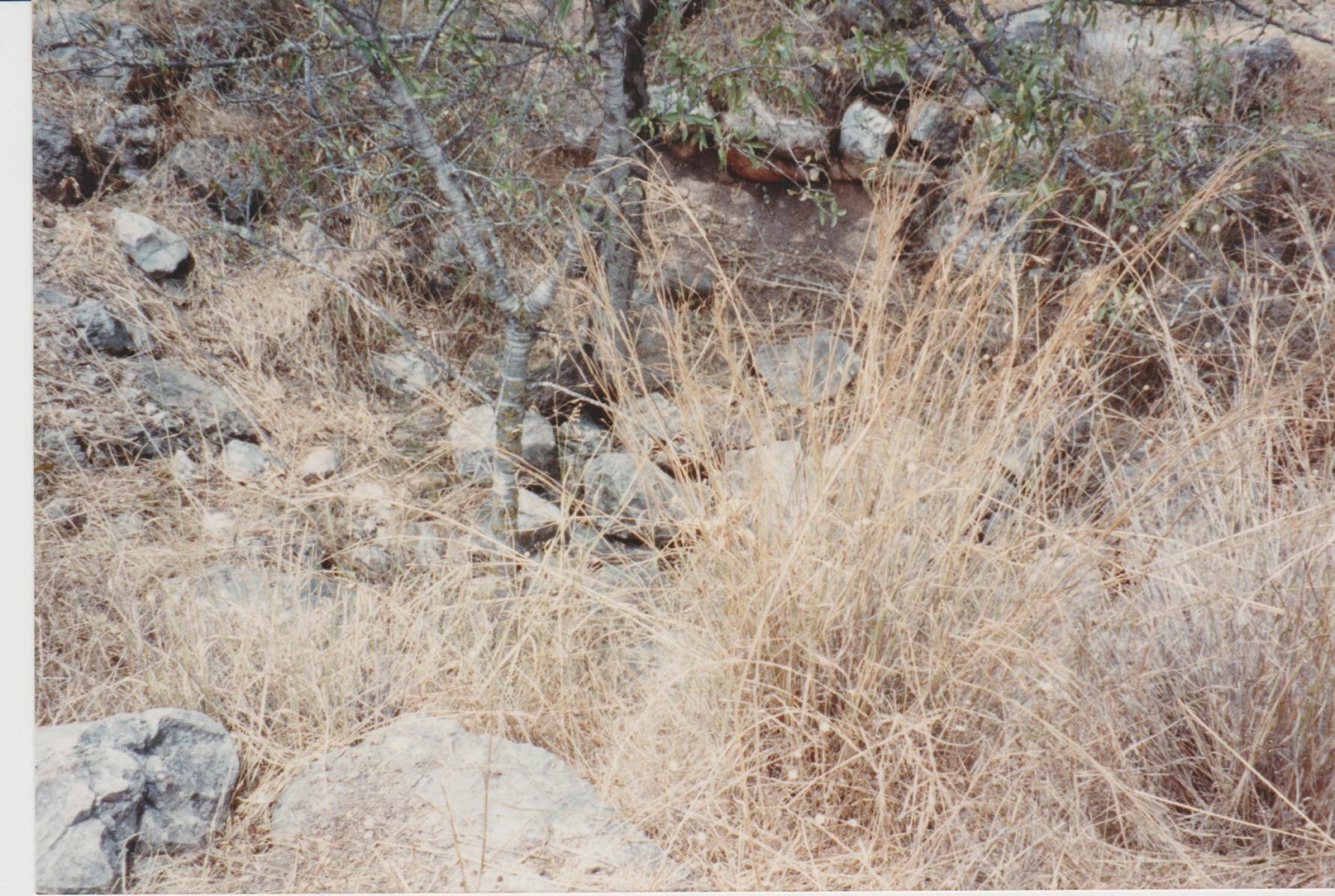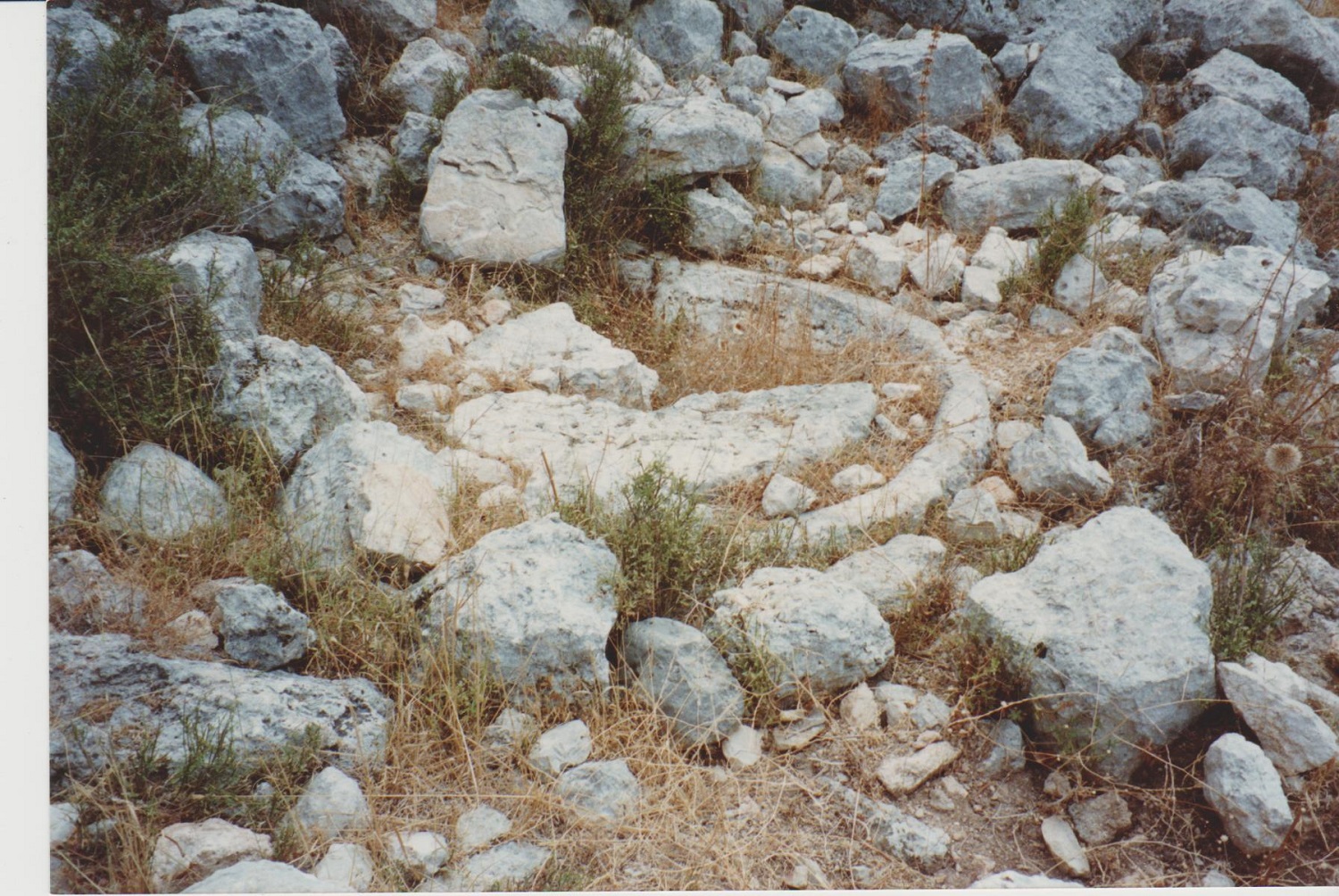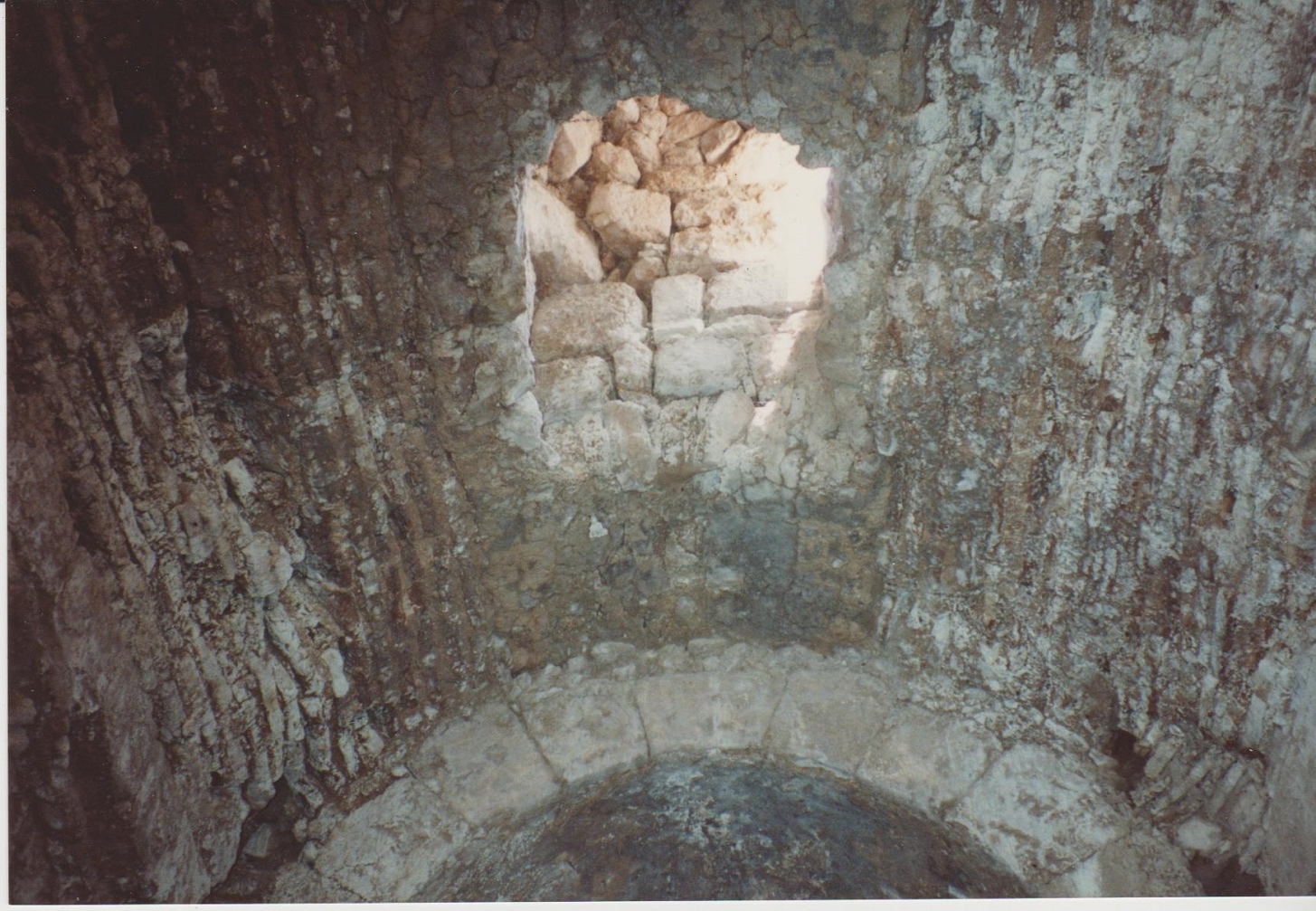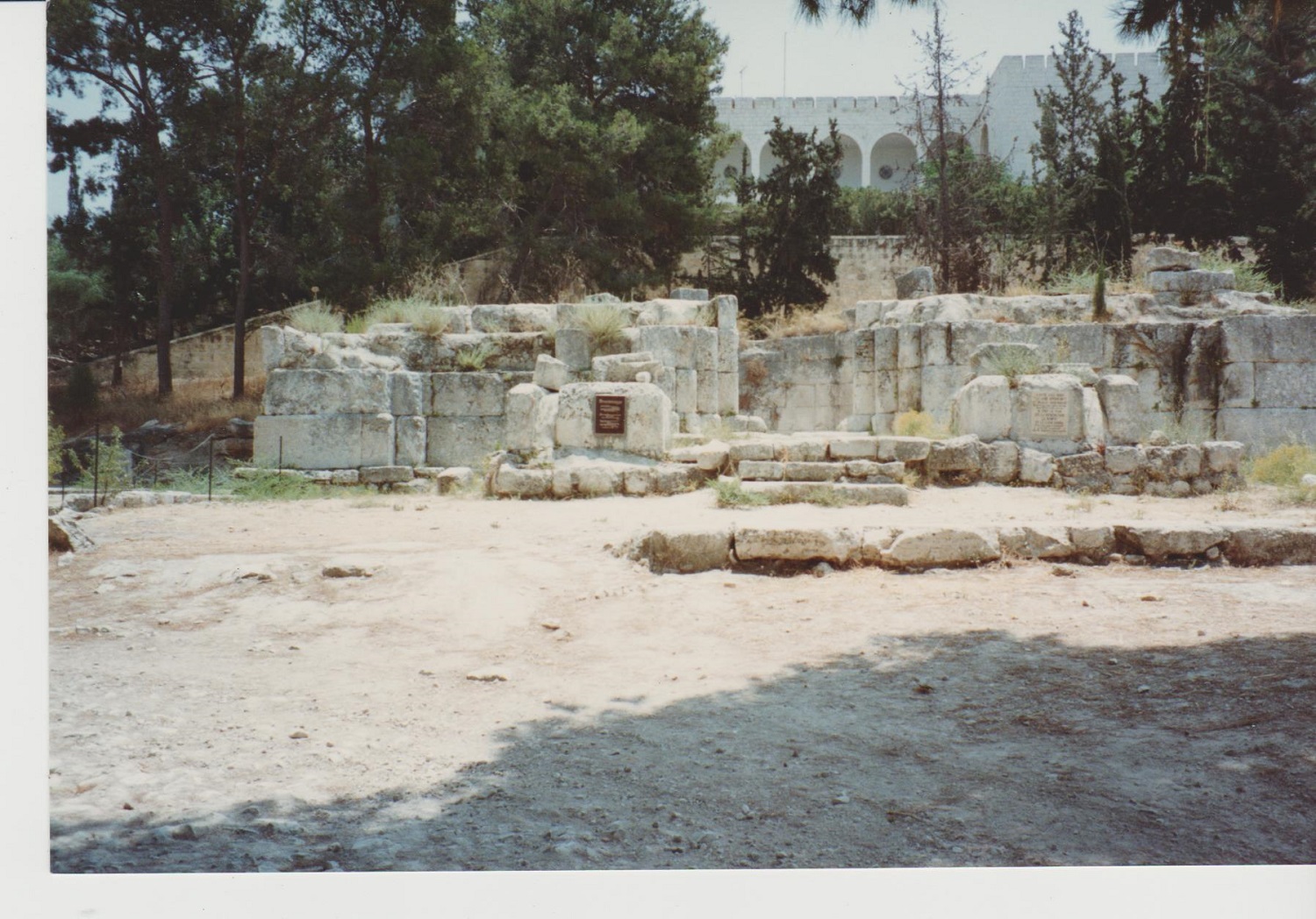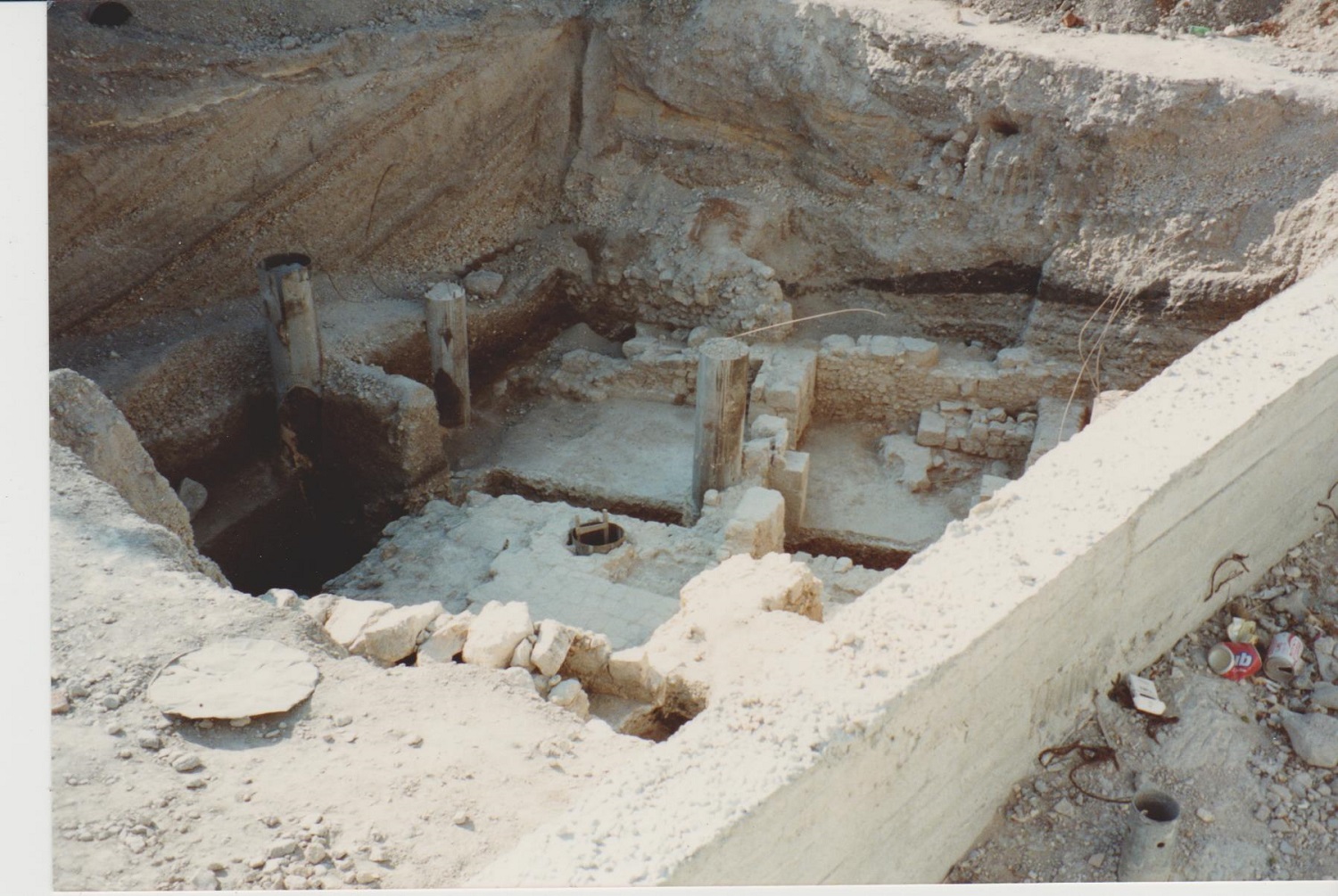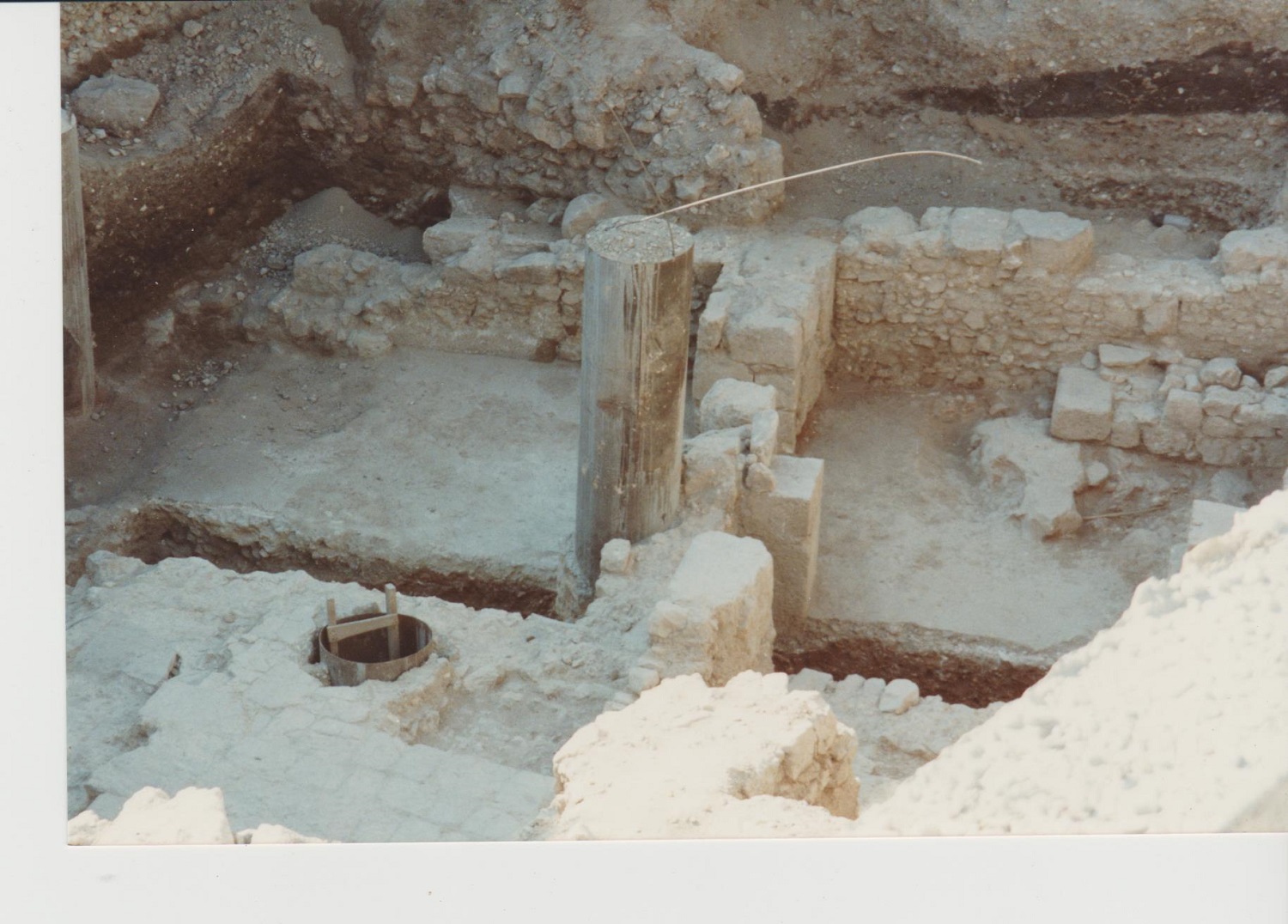Roman Landscapes of the West Bank
This section includes photographs and material from 1990 on Deir Samaan; Hirbet Basatin; the bathhouse at Latrun and the nearby 'villa'; excavations by Jaffa Gate, Old City Jerusalem. There have been huge changes since then.
In the summer of 1990, during the Palestinian intifada and shortly after the Iraqi invasion of Kuwait which closed down many travel and research options in the Middle East, I found myself (surprisingly) able to visit and photograph a number of Roman and Byzantine period sites (villages and 'villas') in the Occupied West Bank.
There have been enormous changes since 1990 to this contested landscape, and to these sites, notably Israeli domestic construction as part of Israel's settlement expansion in the West Bank, and excavation.
This brief survey was supported mainly by a post-doctoral grant from the British Academy. My thanks to Prof Shimon Dar for drawing my attention to the sites (notably Deir Samaan and Hirbet Basatin) and to his 1986 publication of his PhD thesis Landscape and Pattern: An Archaeological Survey of Samaria 800 BCE - 636 CE (BAR). See also Greenberg R and Keinan A 2009 Israeli Archaeological Activity in the West Bank 1967 - 2007. A Sourcebook for location details and what happened archaeologically after 1990. All photo credits below: Eleanor Scott
Deir Samaan, by Leshem
A Roman and Byzantine period 'villa'
Deir Samaan, summer 1990. There is evidence of the original Roman construction, Byzantine modification and re-use, and modern uncovering of wall lines (presumably for the purposes of determining a basic plan of the site) prior to my visit of 1990. Credit: Eleanor Scott.
ABOVE Roman period ashlar wall, with Byzantine additions visible. The modern uncovering of the Roman wall lines was evident throughout the site when I visited in 1990. The site is reported as excavated by an Israeli team in 1992 (Greenberg and Keinan 2009, site 164).
ABOVE Landscape and ancient quarrying at Deir Samaan.
ABOVE Right-hand photograph: (from left to right) Ofer Shimon, David Amar, and Palestinian boy from the village next to site (plus donkey).
ABOVE Left: me in discussion with Ofer Shimon about how the available basic plan matches (or doesn't) with the archaeology. Right: Ofer Shimon pacing out part of the site; David Amar and Audrey Hamilton look on.
ABOVE More images of the site
Deir Samaan and landscape. Credit: Eleanor Scott
Apparent Byzantine re-use of Roman features. Credit: Eleanor Scott
Detail. Credit: Eleanor Scott
This small building has been interpreted as a Byzantine church or monastery. All pottery and tegulae (small tiles) visible on the surface in 1990 were certainly of Byzantine date. Credit: Eleanor Scott
Byzantine re-use. Credit: Eleanor Scott
There were already signs of clearance of wall lines and pre-excavation at the site of Deir Samaan in 1990. Credit: Eleanor Scott
In 1990 there were already signs at Deir Samaan of wall clearances, Israeli survey markings and left over pre-excavation equipment (ABOVE and BELOW).
Hirbet Basatin
A Roman and Byzantine 'farmstead'
Hirbet Basatin. Credit: Eleanor Scott
Hirbet Basatin in the West Bank, 1990
Re-used column with vertical slot, common in the region. Credit: Eleanor Scott
Bathhouse at Latrun, by Emmaus
Roman - Byzantine bathhouse at Latrun, at the 'Green Line' West Bank border
Roman and Byzantine bathhouse at Latrun, being excavated by Mordechair Gihon in 1990. Visited with Richard Harper the (then) Director of the BSAJ (British School of Archaeology in Jerusalem). Credit: Eleanor Scott
In the summer of 1990 I visited the site of the bathhouse at Latrun (near Emmaus) with Richard Harper, the (then) Director of the British School of Archaeology in Jerusalem. The site was being excavated by Israeli archaeologist Mordechai Gihon. The six photographs shown here all date to summer 1990, prior to the main conservation works.
Richard Harper and Mordechai Gihon discuss the site and the excavations, summer 1990. Credit: Eleanor Scott
The Archaeology Conservation Center for Israel (which includes sites in the West Bank) includes the bathhouse at Latrun in its database, which provides the briefest of descriptions: "Inner plains sites ... Latrun ... The Roman bathhouse ... This amazing structure survived largely due to its proximity to the tomb of a famous sheikh. The original roof of the structure survived and the room structure was clear. Conservation work included taking apart and re-assembling of the walls and arches that were distorted due to earthquakes. The works were in conjunction with the excavations led by Mordechai Gihon.'
Closer view of the excavated areas. Credit: Eleanor Scott
Looking outwards. Summer 1990. Credit: Eleanor Scott
Looking upwards. Summer 1990. Credit: Eleanor Scott
Inside the bathhouse. Summer 1990. Credit: Eleanor Scott
The 'Villa' Next to the Bathhouse at Latrun
The Roman 'villa' close to the Roman-Byzantine bathhouse at Latrun. Summer 1990. Credit: Eleanor Scott
By Jaffa Gate, Old City Jerusalem
Israeli excavations in advance of Israeli road construction by Jaffa Gate, Old City Jerusalem, summer 1990
By Jaffa Gate, in advance of road construction, summer 1990. Credit: Eleanor Scott
